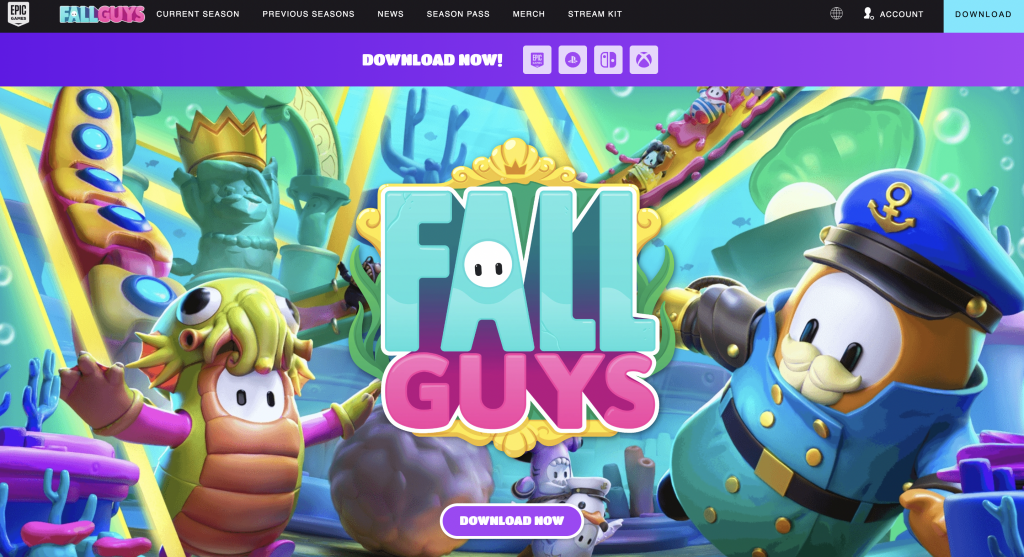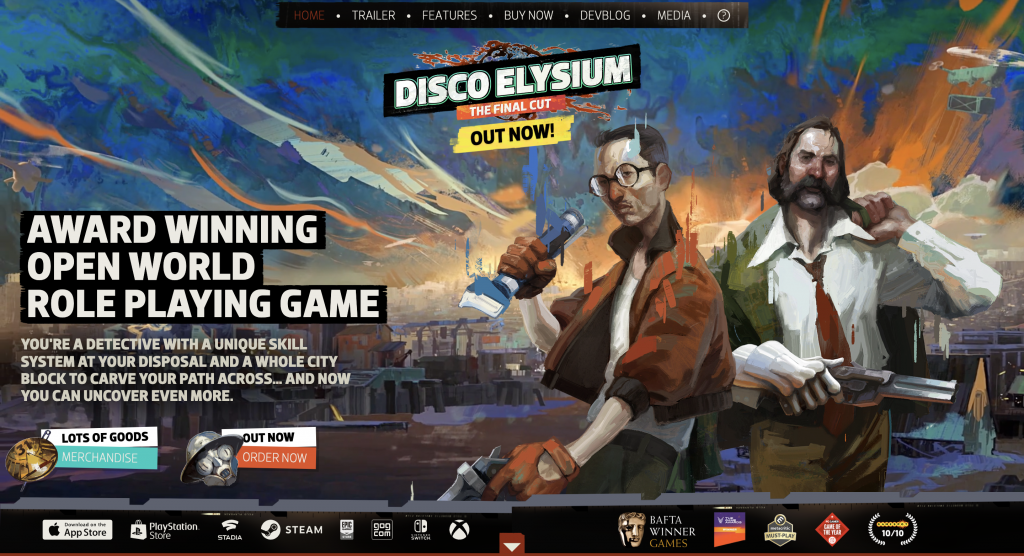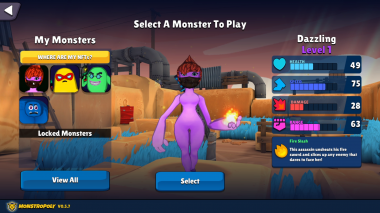Creating a website for your game is an essential part of marketing and promoting your game. A well-designed and informative game website can help generate interest in your game and encourage players to purchase and play it. In this article, we will explore how to make a game’s website, including useful tips and tricks. We will also review 15 examples of great game websites of famous games and discuss what should be included on a game website.
Part 1: Why Your Game Needs a Website
A website is an essential tool for promoting your game and reaching potential players. Here are some of the main reasons why your game needs a website:
- It’s a Marketing Tool: A website is an effective way to market your game and build a fan base before the game is even released.
- It’s an Information Hub: A website is a place where players can find all the information they need about your game, including trailers, screenshots, gameplay mechanics, and release dates.
- It’s a Point of Contact: A website is a way for players to get in touch with you if they have any questions or feedback about your game.
- It’s a Way to Sell Your Game: A website is a place where players can purchase your game, either directly from your site or through links to other online stores.
Part 2: Useful Tips and Tricks for Making a Game’s Website
- Keep It Simple: A cluttered or confusing website can turn potential players away. Keep your website simple, clean, and easy to navigate.
- Use High-Quality Images: Use high-quality images and videos to showcase your game’s graphics and gameplay mechanics. This will give players a better idea of what to expect from your game.
- Make It Mobile-Friendly: More and more players are using their mobile devices to browse the web. Make sure your website is mobile-friendly so players can access it from any device.
- Include Social Media Links: Social media is an important tool for promoting your game and building a fan base. Include links to your social media accounts on your website so players can follow you and share your content.
- Use Calls to Action: Use calls to action, such as “Buy Now” or “Sign Up for Updates,” to encourage players to take action and engage with your game.
- Include Reviews and Testimonials: Include reviews and testimonials from players or game critics to showcase the quality and popularity of your game.
- Keep It Up-to-Date: Keep your website up-to-date with the latest news and information about your game, including release dates and new content.
- Showcase Your Team: Players are often interested in the people behind the game. Include information about your development team on your website to give players a personal connection to your game.
- Use SEO: Use search engine optimization (SEO) techniques to improve your website’s visibility in search engine results and attract more visitors.
- Provide Support: Provide players with support options, such as an FAQ or contact form, to help them with any issues they may encounter while playing your game.
Part 3: Examples of Great Game Websites

- The Last of Us Part II: The Last of Us Part II’s website is simple, clean, and easy to navigate. It features high-quality images and videos that showcase the game’s graphics and gameplay mechanics. The website also includes links to the game’s social media accounts and a “Buy Now” button for easy access to purchasing options.
- Cyberpunk 2077: Cyberpunk 2077’s website is sleek and futuristic, fitting the game’s theme. It includes trailers, screenshots, and gameplay mechanics, as well as links to the game’s social media accounts and online store pages.
- Death Stranding: Death Stranding’s website is visually stunning, with a dark and moody design that matches the game’s tone. It includes information about the game’s story, gameplay mechanics, and characters, as well as links to social media accounts and online store pages.
- Among Us: Among Us’s website is simple and playful, with colorful graphics and animations. It includes information about the game’s mechanics, gameplay modes, and social features, as well as links to social media accounts and online store pages.
- Ori and the Will of the Wisps: Ori and the Will of the Wisps’s website is vibrant and colorful, with high-quality images and videos showcasing the game’s graphics and gameplay mechanics. It includes links to the game’s social media accounts and online store pages, as well as information about the game’s story and characters.
- Fall Guys: Fall Guys’s website is playful and whimsical, matching the game’s lighthearted tone. It includes information about the game’s mechanics and social features, as well as links to social media accounts and online store pages.
- Stardew Valley: Stardew Valley’s website is charming and rustic, with a hand-drawn design that matches the game’s style. It includes information about the game’s mechanics, characters, and storyline, as well as links to social media accounts and online store pages.
- Subnautica: Subnautica’s website is immersive and atmospheric, with high-quality images and videos showcasing the game’s underwater world. It includes information about the game’s mechanics, storyline, and characters, as well as links to social media accounts and online store pages.
- Celeste: Celeste’s website is simple and elegant, with a minimalist design that matches the game’s style. It includes information about the game’s mechanics, characters, and storyline, as well as links to social media accounts and online store pages.
- Minecraft: Minecraft’s website is colorful and playful, with a design that matches the game’s blocky graphics. It includes information about the game’s mechanics, gameplay modes, and social features, as well as links to social media accounts and online store pages.
- Hollow Knight: Hollow Knight’s website is dark and moody, with high-quality images and videos showcasing the game’s atmospheric world. It includes information about the game’s mechanics, storyline, and characters, as well as links to social media accounts and online store pages.
- Undertale: Undertale’s website is quirky and playful, matching the game’s humorous and whimsical tone. It includes information about the game’s mechanics, characters, and storyline, as well as links to social media accounts and online store pages.
- Disco Elysium: Disco Elysium’s website is stylish and retro, with a design that matches the game’s noir-inspired setting. It includes information about the game’s mechanics, storyline, and characters, as well as links to social media accounts and online store pages.
- Little Nightmares: Little Nightmares’s website is eerie and atmospheric, with high-quality images and videos showcasing the game’s haunting world. It includes information about the game’s mechanics, storyline, and characters, as well as links to social media accounts and online store pages.
- Donut County: Donut County’s website is playful and colorful, with a design that matches the game’s whimsical tone. It includes information about the game’s mechanics, characters, and storyline, as well as links to social media accounts and online store pages.

Part 4: What Should Be Included on a Game Website
- Trailers and Screenshots: High-quality trailers and screenshots are essential for showcasing your game’s graphics and gameplay mechanics.
- Gameplay Mechanics: Players want to know how your game works, so be sure to include information about the gameplay mechanics on your website.
- Storyline and Characters: If your game has a storyline and characters, be sure to include information about them on your website.
- Release Date and Platforms: Players want to know when and where they can play your game, so be sure to include information about the release date and platforms on your website.
- Social Media Links: Social media is an important tool for promoting your game and building a fan base, so be sure to include links to your social media accounts on your website.
- Purchase Options: If players can purchase your game directly from your website or through other online stores, be sure to include links to these options on your website.
- Reviews and Testimonials: Reviews and testimonials from players or game critics can help build interest in your game and showcase its quality.
- Development Team: Including information about your development team can give players a personal connection to your game and build trust in its quality.
- Support Options: Provide players with support options, such as an FAQ or contact form, to help them with any issues they may encounter while playing your game.
- News and Updates: Keep your website up-to-date with the latest news and information about your game, including new content releases and updates.
Conclusion
A game website is an essential tool for promoting your game and building interest in it. By following the useful tips and tricks outlined in this article and looking at the 15 examples of great game websites, you can create a website that showcases your game’s graphics, gameplay mechanics, storyline, and characters. Be sure to include all the necessary information, such as release dates, platforms, and purchase options, and keep your website up-to-date with the latest news and updates. A well-designed and informative game website can help generate interest in your game and encourage players to purchase and play it.




